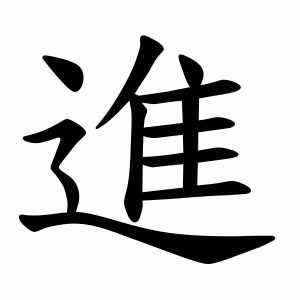進
- to advance;
- to go forward;
Etymology
This character has existed since the oracle bone script. In oracle bone inscriptions, it was a compound ideograph formed from 隹 (chwi, “bird”) and 止 (ji, “foot, stop”), expressing the idea “to move forward.”
In bronze inscriptions, 彳 (cheok, “to walk step by step”) was added. By the time of the small seal script, 彳 and 止 were combined into 辵 (착, “to walk slowly”), resulting in the present form of 進.
Usage in Korean
Very common in both everyday terms (승진, 전진) and academic/literary usage (진보).
Often used in contrast with 퇴 (退, to retreat) → e.g., 진퇴 (進退, advance and retreat).
Common compounds:
진출 (進出) – advancement, entry, expansion;
진보 (進步) – progress, advancement;
승진 (昇進) – promotion;
진급 (進級) – grade promotion, advancement to the next level;
전진 (前進) – forward march, advancement.
- 卜人土 (YOG)
- ⿺ 辶 隹
